Antique Mutoscope Nickelodeon Arcade Very Nice condition Circa 1899-1905
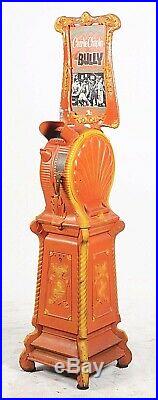
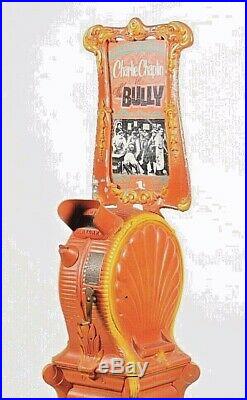
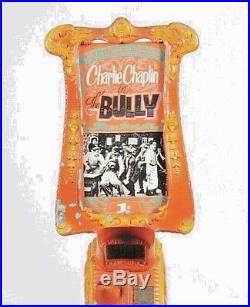
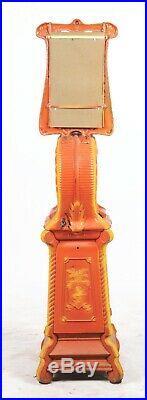
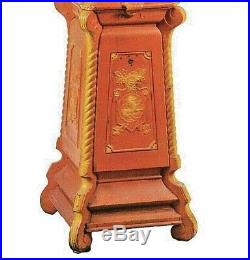
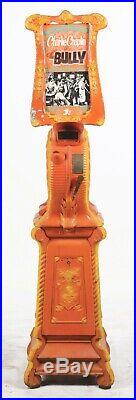
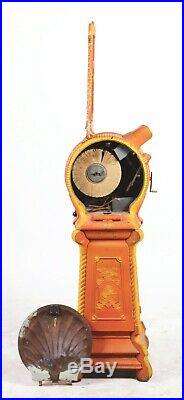
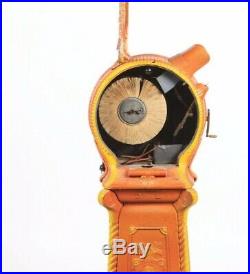
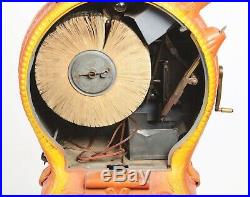
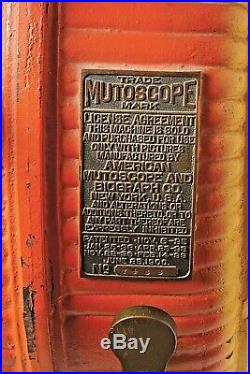
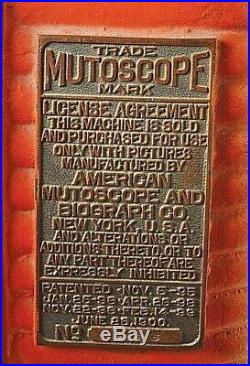

Providing quality products and services to the Cinema Industry since 1956! ICE-MTE is pleased to present for your pleasure another. AKA "Easy Street" Circa 1917. When Charlie the Tramp wanders into a mission he is smitten by Edna and puts back the collection box which he has taken. Reformed, he becomes a policeman and is assigned to rough-and-tumble Easy Street.
Unable to trick or beat Eric the Tough, he puts Eric's head in a gas pipe and anesthetizes him. A hero, he now helps many poor people living on Easy Street. Eric escapes jail, Edna is kidnapped, but Charlie (recharged after sitting on a doper's needle) conquers all. Easy Street is transformed as is Eric. This is an all original unit made at the factory in.
This is the real deal! The Mutoscope works on the same principle as the flip book. The individual image frames are conventional black-and-white, silver-based photographic prints on tough, flexible opaque cards.
Rather than being bound into a booklet, the cards are attached to a circular core, rather like a huge Rolodex. A reel typically holds about 850 cards, giving a viewing time of about a minute. The reel with cards attached has a total diameter of about 10 inches (25 cm); the individual cards have dimensions of about. In (7.0 cm × 4.8 cm). The patron views the cards through a single lens enclosed by a hood, similar to the viewing hood of a stereoscope.
The cards are generally lit electrically, but the reel is driven by means of a geared-down hand crank. Each machine holds only a single reel and is dedicated to the presentation of a single short subject, described by a poster affixed to the machine.
The patron can control the presentation speed only to a limited degree. The crank can be turned in both directions, but this does not reverse the playing of the reel.
Nor can the patron extend viewing time by stopping the crank because the flexible images are bent into the proper viewing position by tension applied from forward cranking. Stopping the crank reduces the forward tension on the reels causing the reel to go backwards and the picture to move from the viewing position; a spring in the mechanism turns off the light and in some models brings down a shutter which completely blocks out the picture. Casler was raised in Fort Plain, New York, and served as an apprentice to his cousin, machinist and inventor Charles E.
Lipe, founder of the C. Lipe Machine Shop in Syracuse, New York from 1889 to 1893.
In Schenectady, New York, designing electric rock drills. He was superintendent of the Marvin Electric Drill Co. Casler was the co-founder with.
Of the KMCD group, which eventually became the American Mutoscope and Biograph Company. Following an initial suggestion from Dickson, Casler developed the Mutoscope. A viewing device which used radially-mounted photographs flicked over in rapid sequence to give an illusion of movement. This instrument which was ready by the autumn of 1894, was originally intended to be a competitor to the Edison Kinetoscope. Casler next worked on the development of a camera, the Mutagraph. To provide subjects for it, and by June 1895 a prototype had been successfully tested with film.In the meantime, it had become clear that it was projected film rather than the Kinetoscope that offered the most potential for a long term business; and Casler therefore designed the Biograph. Electrically driven, and using wide-gauge sprocketless film, it was intended, like the camera, to be as different as possible from anything that had been patented by. Dicksons knowledge of the development work done at West Orange makes it very likely that he was involved with Casler, at least at the design stage, but officially it was Casler who was announced as the inventor in both patent specifications and theatre announcements.
The high quality mechanical work done by both Casler and Marvin laid the foundation for the later success of the Biograph group. Both camera and projector produced outstandingly good results, enabling the company quickly to gain a reputation for high quality, and helping it to differentiate its products from the many competitors it faced. It was by using Caslers patents as security for loans that the group was able to raise the considerable amount of capital required to begin international expansion during the 1890s. Casler helped develop a portable hand-cranked camera in 1900 to replace the bulky, motor-operated camera used until then.
With Harry Marvin, Herman Casler had earlier formed the Marvin & Casler Co. Their Canastota machine shop made a range of products including automobile engines, name plate machines, and patent automatic palm readers as well as motion picture equipment. Casler was associated with Biograph until 1921 in the design and manufacture of motion picture cameras, projectors, automatic printing machines, and other special machines associated with the production of motion pictures. He retired from manufacturing in 1926, but continued to serve as a consulting engineer to a number of corporations, and filed his last patent in 1937, two years before his death. Don't miss this wonderful o pportunity! Plus over 40 Years in the Projection Equipment and Manufacturing business!International and Export orders are welcomed anywhere in the world. ICE-MTE suppliers of quality cinema equipment since 1975.
The item "Antique Mutoscope Nickelodeon Arcade Very Nice condition Circa 1899-1905" is in sale since Thursday, June 25, 2020. This item is in the category "Collectibles\Arcade, Jukeboxes & Pinball\Arcade Gaming\Non-Video Arcade Machines". The seller is "kinemaman" and is located in Miami, Florida. This item can be shipped to United States.